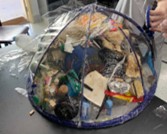Mooloolaba Seabin Trial
Overview
Seabins were installed for a month long period each in two locations in Mooloolah River
Mooloolaba Marina – September 2018
Mooloolaba Wharf – February 2019
- More rainfall and wind was experienced during the Mooloolaba Wharf trial
- Total dry weight 277.5kg
- Including:
- 7.3kg plastics
- 257.4kg terrestrial biomass debris
- Including:
It is interesting to note the surface slick, terrestrial biomass and litter pictured in these two images.
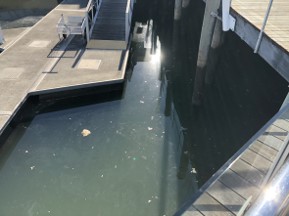 .
. 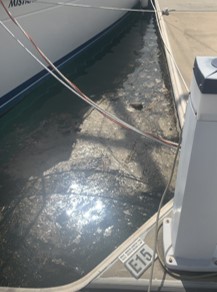
Statistical Overview
26 629 items collected (excluding all terrestrial biomass)
22 350 polystyrene balls
2377 plastic pieces
1331 cigarette butts
368 food wrappers
84 straws
Theses photos picture an average 24 hour catch for each respective Seabin during the initial stages of the trial. In both cases large amounts of terrestrial biomass can be observed as part of the catch alongside other litter items.
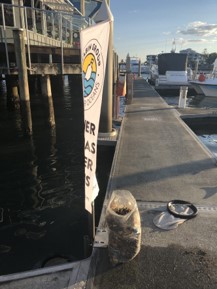
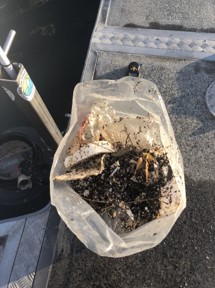
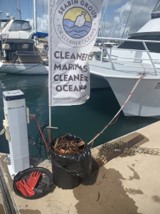
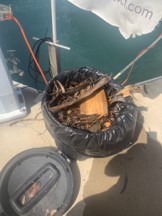
Impact Overview
The photo series demonstrates the impact a single Seabin was able to have within each Marina. The images to the right picture the environment at equilibrium whilst, the images to the left picture each marina prior to the trial period.
Wooloolaba Wharf
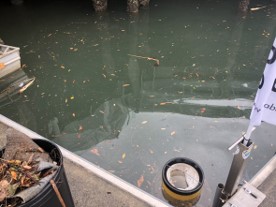

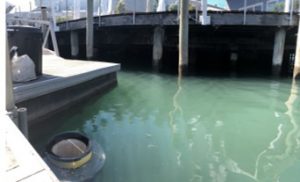
Wooloolaba Marina
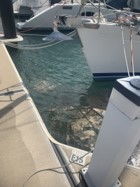
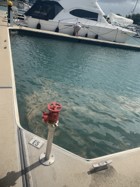
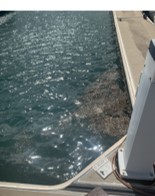
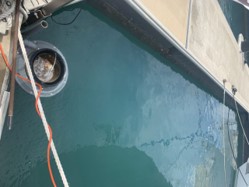
Observations
The respective marina design relative to tidal movements and channel hydrology can be correlated, alongside rainfall, as contributing to the variance in catch quantity between the two locations.
Mooloolaba Wharf is positioned at the downwind and down current side of the predominant breeze in a river basin. The Mooloolaba Wharf harbours a large quantity of debris, blown in by winds and currents, that is circulated throughout the Mooloolaba Wharf thanks to nominal tidal currents and its basin-like shape. Comparatively, Mooloolaba Marina is laid out in five U-shaped bays running perpendicular to river flow. Debris in these bays gets trapped between the perpendicular fingers moving from one marina arm to the other. Due to the layout and design of Mooloolaba Marina with minimal flow though paths for the debris to travel this marina requires a higher number of Seabins to maintain a clean marina comparative to the Mooloolaba Wharf. i.e there is a higher number of debris accumulation points in Mooloolaba Marina.
- The number of polystyrene balls (foam pieces) captured at both locations suggests a leak somewhere in the Mooloolah River. Similar numbers were recorded at Mooloolaba Wharf and Mooloolaba Marina. Speculated sources include a number of pontoons with uncovered undersides in the river system and dry cutting foam products within the building industry.
- The variation in terrestrial biomass can be correlated to a difference in rainfall across the trial periods as well as the aforementioned locations and layouts of each marina. During the Wharf trial in September 2018 rainfall was experienced throughout the month, whilst during February (Marina trial) only 2 days of rainfall were experienced. Rainfall has a large influence on the amount of terrestrial biomass in waterways by flushing biomass directly into the river system through stormwater drainage and run off.
To consider the respective ratios of polystyrene balls relative to terrestrial biomass in both locations (refer to table below), it can be suggested that a percentage of the biomass captured in 2018 entered the river system through point and indirect sources in response to the rainfall. Whilst the smaller difference in polystyrene balls during the period suggests majority of the waste is from a source within the river.

Debris captured in 1 month
The first image display debris captured during the month long trials at both Mooloolaba Wharf and Mooloolaba Marina. The second image includes debris, plastics and microplastics captured by the Seabins and highlights the impact the Seabin had in both locations (top right, second right series).
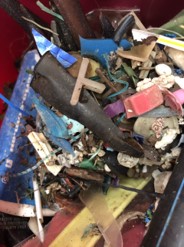

Seabin as an eductional tool
An upcycled jellyfish made by Matthew Flinders students from the litter captured at Mooloolaba Wharf.
